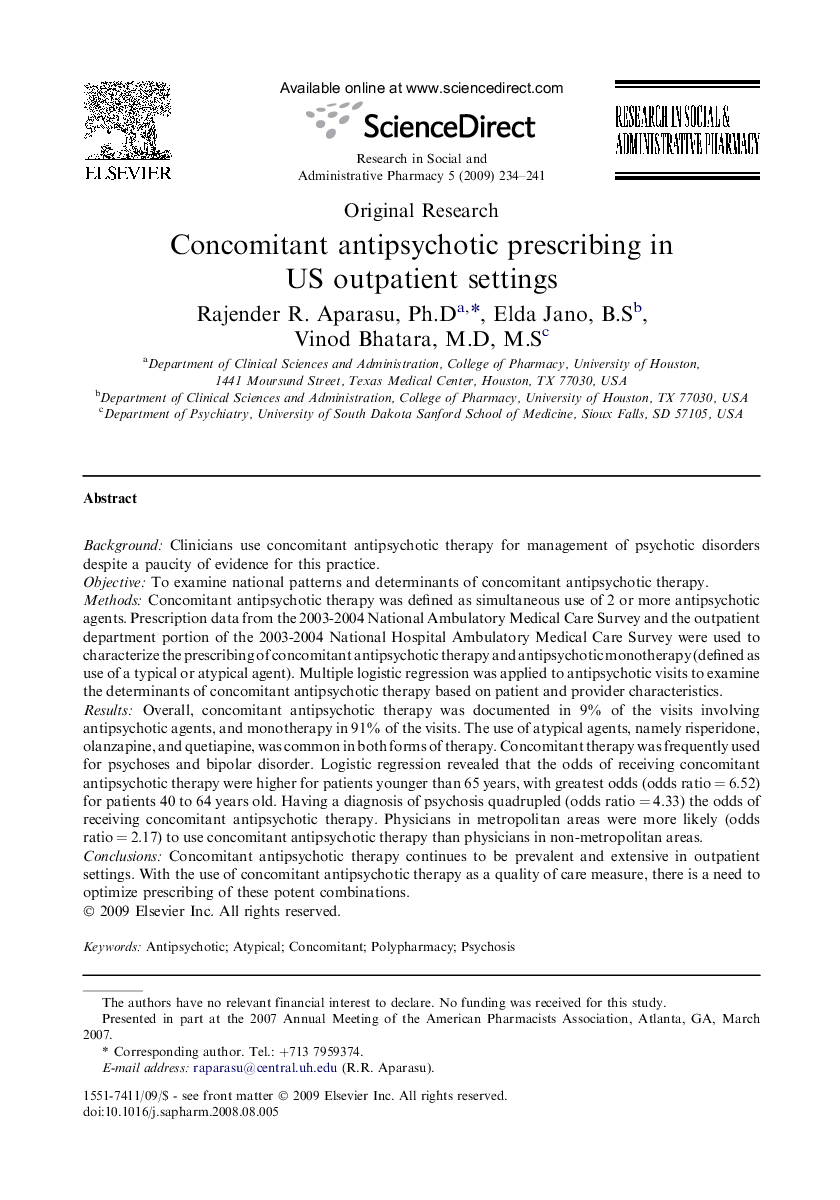| Article ID | Journal | Published Year | Pages | File Type |
|---|---|---|---|---|
| 2509145 | Research in Social and Administrative Pharmacy | 2009 | 8 Pages |
BackgroundClinicians use concomitant antipsychotic therapy for management of psychotic disorders despite a paucity of evidence for this practice.ObjectiveTo examine national patterns and determinants of concomitant antipsychotic therapy.MethodsConcomitant antipsychotic therapy was defined as simultaneous use of 2 or more antipsychotic agents. Prescription data from the 2003-2004 National Ambulatory Medical Care Survey and the outpatient department portion of the 2003-2004 National Hospital Ambulatory Medical Care Survey were used to characterize the prescribing of concomitant antipsychotic therapy and antipsychotic monotherapy (defined as use of a typical or atypical agent). Multiple logistic regression was applied to antipsychotic visits to examine the determinants of concomitant antipsychotic therapy based on patient and provider characteristics.ResultsOverall, concomitant antipsychotic therapy was documented in 9% of the visits involving antipsychotic agents, and monotherapy in 91% of the visits. The use of atypical agents, namely risperidone, olanzapine, and quetiapine, was common in both forms of therapy. Concomitant therapy was frequently used for psychoses and bipolar disorder. Logistic regression revealed that the odds of receiving concomitant antipsychotic therapy were higher for patients younger than 65 years, with greatest odds (odds ratio = 6.52) for patients 40 to 64 years old. Having a diagnosis of psychosis quadrupled (odds ratio = 4.33) the odds of receiving concomitant antipsychotic therapy. Physicians in metropolitan areas were more likely (odds ratio = 2.17) to use concomitant antipsychotic therapy than physicians in non-metropolitan areas.ConclusionsConcomitant antipsychotic therapy continues to be prevalent and extensive in outpatient settings. With the use of concomitant antipsychotic therapy as a quality of care measure, there is a need to optimize prescribing of these potent combinations.
